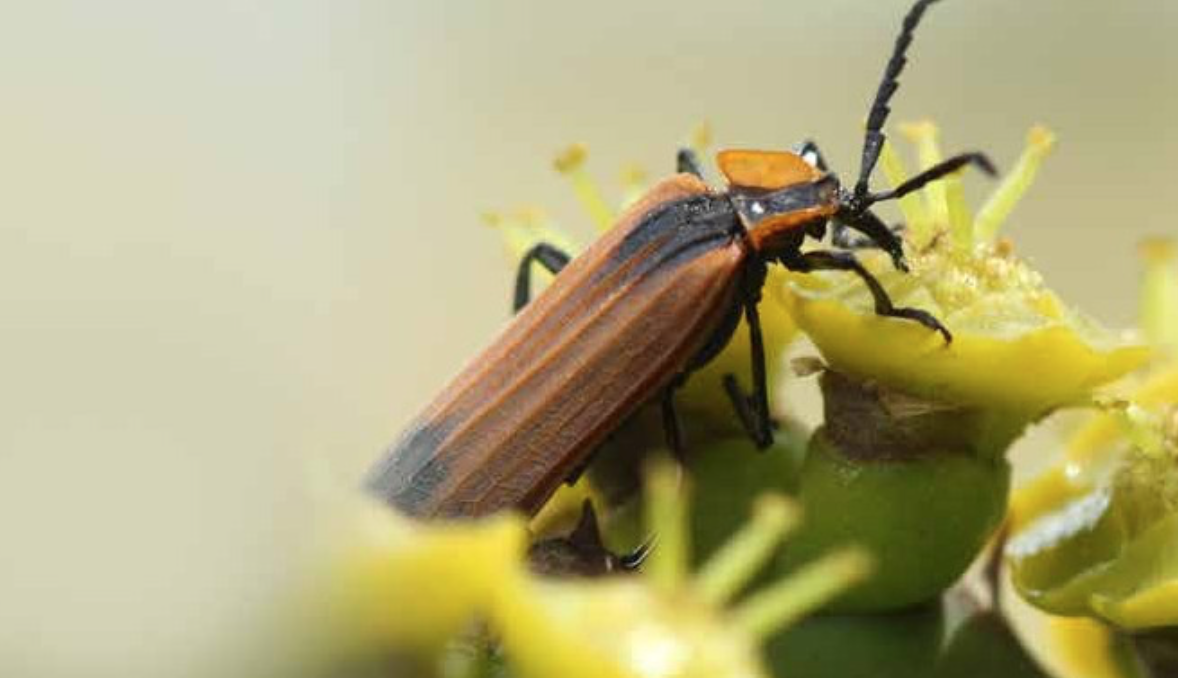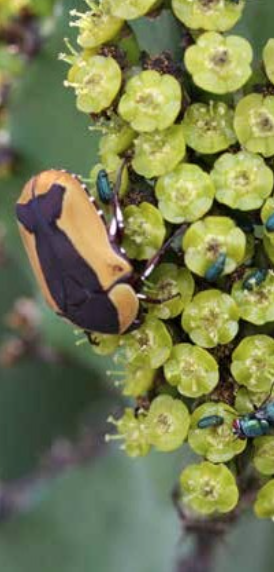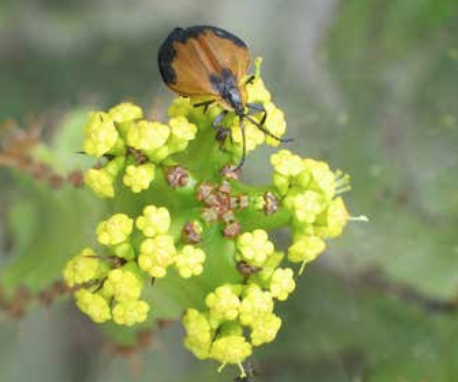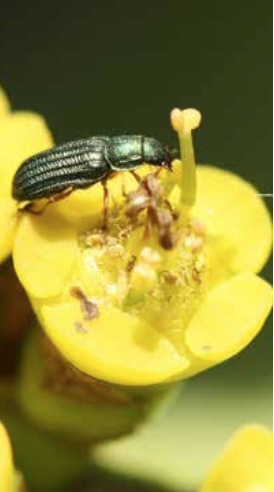There are more different kinds of beetles on the planet than any other group of creatures. Beetles have been around for a very long time, hundreds of millions of years in fact. Some beetles developed relationships with plants as specialised pollinators even before bees had appeared on the scene! Beetles are important pollinators in some habitats where bees are scarce, including some very arid areas.
Flowers that are pollinated by beetles tend to be larger and produce a musty or fruity scent to attract the beetles. A number of palm tree species, including the Oil Palm, are pollinated by specialised beetles.
In East Africa one ancient group of plants, the cycads, are pollinated by beetles, including weevils, that complete their life- cycle within the reproductive cones produced by the plants.
As there are separate male and female cycads, the pollinators are essential for the survival of some of these magnificent, rare plants in the wild.
Beetles of many different kinds including chafers, longhorns and leaf beetles, do visit flowers in large numbers. However, they mostly feed on the flowers causing some damage and don’t serve as efficient pollinators.
Flowers that are pollinated by beetles tend to be larger and produce a musty or fruity scent to attract the beetles.






TOP, LEFT TO RIGHT Leaf beetle on acacia flower.Small longhorn beetle (Cerambycidae) on wild daisy.Rose chafer (Pachnoda sp.) on Euphorbia magnicapsula,
BOTTOM, LEFT TO RIGHT Net-winged beetle on euphorbia.Groove-winged flower beetle (Melyridae) on euphorbia